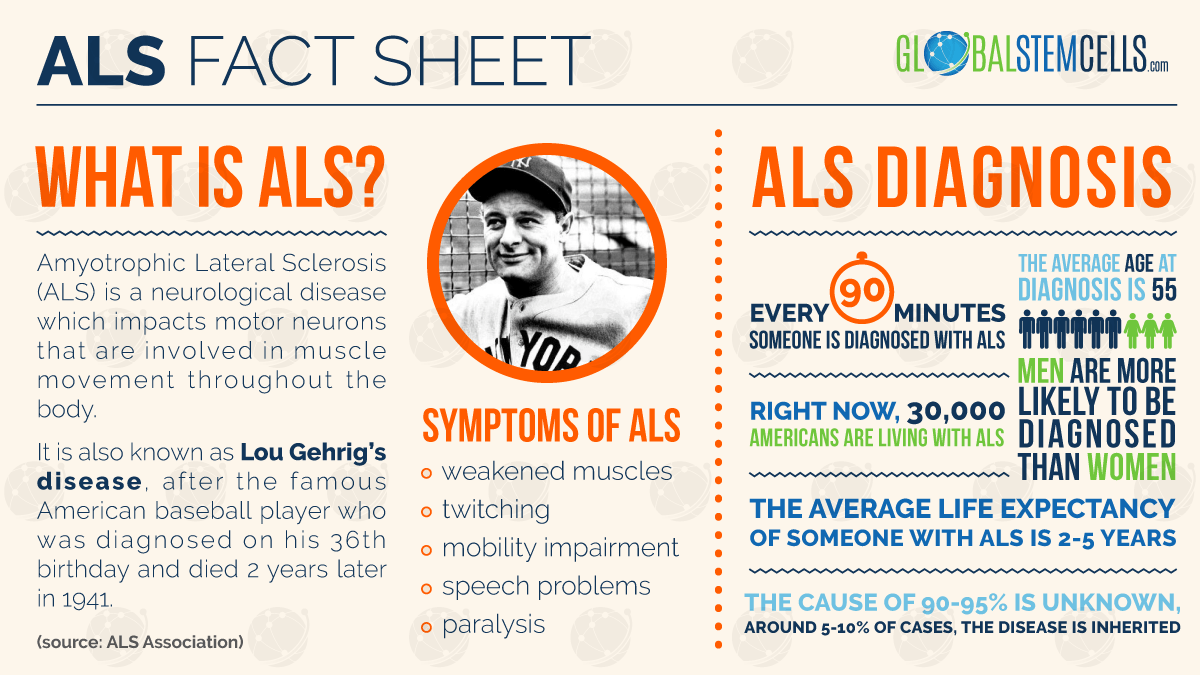Amyotrophic Lateral Sclerosis (ALS), also known as Lou Gehrig’s disease is a rare disease that causes motor-neuron degeneration.
As we know, nerve cells control voluntary muscle movement, and when this disease attacks, victims will gradually experience symptoms such as difficulty in speech, swallowing, tripping and even breathing difficulties. These symptoms get worse and over time the victims become totally paralysed.
Most die within two to four years of their diagnosis.
Professor Stephen Hawking, the world-famous physicist, is a well-known example of someone with ALS. However, he is an exceptional case as he has survived for over 50 years with the disease.
ALS Fact Sheet

To date, ALS has no known cure, however, better methods of diagnosing this disease may improve the quality of life of the individuals who suffer from it.
ALS Diagnosis Progress
This article focuses on a study published a paper in JAMA Neurology by Dr. Alessandra Gaiani. This study tested a possible biomarker of the disease, Neurofilaments, which will help in the diagnosis and help to design better trials for future management of the disease.
Neurofilaments are proteins that provide structural support to motor neurons, and when they degenerate, they release these proteins into the cerebrospinal fluid, which helps cushion the brain and the spinal cord.
In this study, the levels of Neurofilaments in the cerebrospinal fluid of some people was measured. Some of these people had ALS, Dementia and other motor neuron diseases. A number of them had no neurological disease of any kind. They were monitored over a 5 year period to determine the likelihood of survival.
Those with ALS had higher levels of Neurofilaments than all the other groups. It was noted that those patients who had ALS for a longer period of time had lower levels of Neurofilaments than those who had had it for a shorter period. It was therefore concluded that, “Damage to motor neurons at the start of ALS results in the release of a high amount of Neurofilaments, and as time passes by, fewer motor neurons are left to release Neurofilaments.”
They also correlated Neurofilament levels with the survival rates of the patients and noted that those with higher levels died sooner.
As a result, Gaiani and colleagues suggest that measuring Neurofilament levels is important both to diagnosing ALS and to providing accurate prognoses to patients.
One of the drawbacks of this study is that the changes in Neurofilament levels was monitored for a short time. Had this been done, they would understood these levels at a greater depth. This knowledge would have helped in predicting disease progression in different people.
The other drawback is that they had a small number of ALS patients.
Specific syndromes of ALS were also not considered. A larger sample of these patients might have clarified how different levels of Neurofilaments were linked to different syndromes.
A lot of initiatives have gone towards raising funds to aid in the scientific research of ALS. One of the famous ones has been the “Ice Bucket Challenge” where a number of celebrities and popular athletes challenge each other to pour buckets of ice cold water over their heads, raising millions of dollars in the last couple of years.
These funds will go a long way to help in the scientific research of ALS in order to improve diagnosis and better management of ALS.
If you would like any information about current, available treatments for ALS to help slow down the progression of this disease, please contact us and one of our patient representatives will be in touch.




 English
English